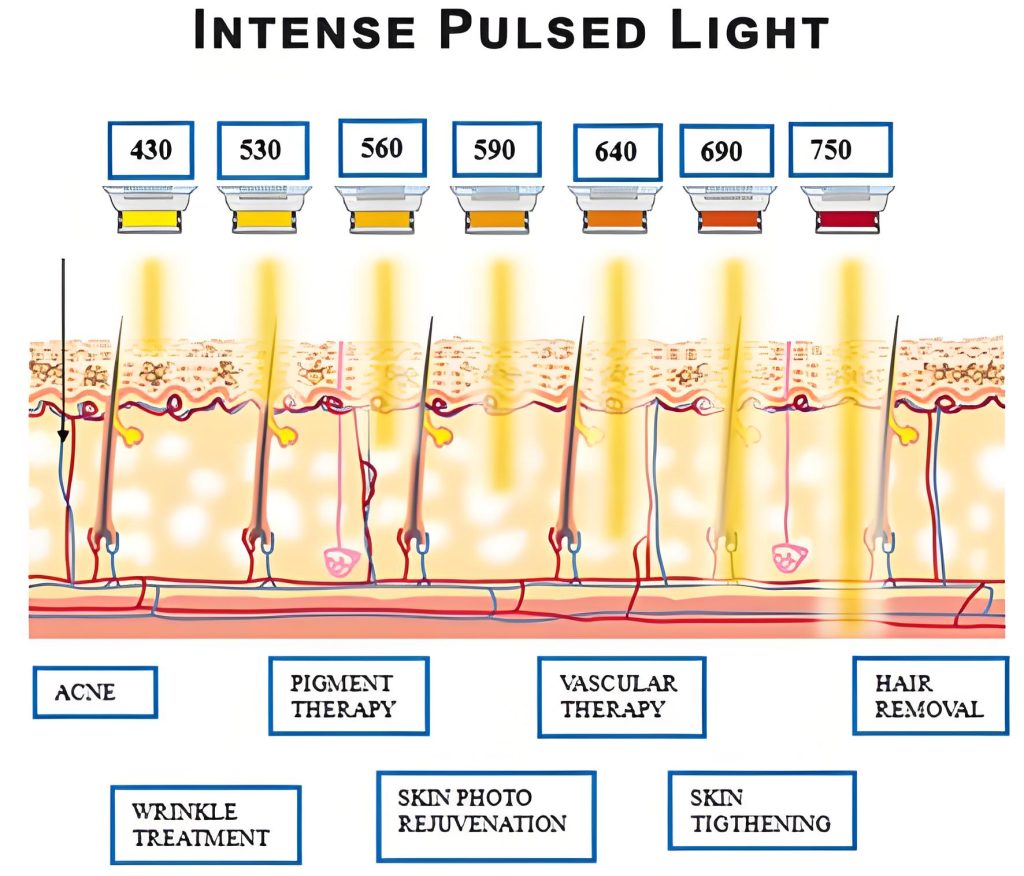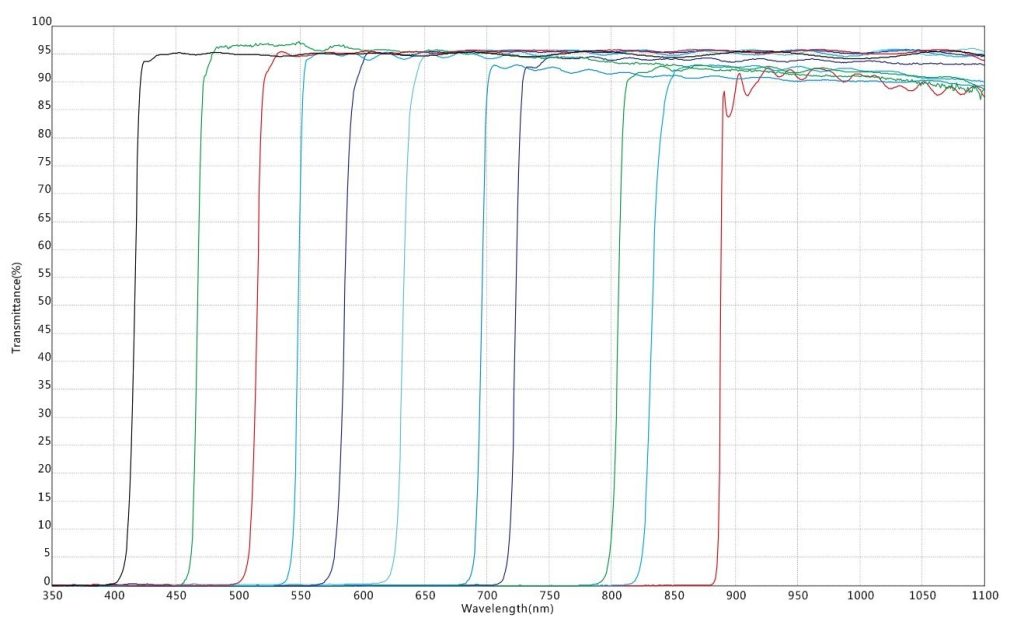Photorejuvenation is a popular non-invasive beauty method that relies on advanced optical technology to improve skin quality. It acts on the skin with photons of specific wavelengths, reduces pigmentation and stimulates collagen production. The optical screening process requires the use of filters. The core of the process is specialized optical filters, which play a key role in customizing light wavelengths for targeted skin care.

1.Optical principle: selective photothermolysis
The core mechanism of photorejuvenation filters lies in selective photothermolysis, that is, light of specific wavelengths is absorbed by chromophores (light-absorbing molecules) in the skin. These chromophores are able to absorb specific spectral ranges.
Hemoglobin (in blood vessels): absorbs light of 500-600 nm.
Melanin (in pigmented lesions): absorbs light in a wide wavelength range of 400-1200 nm.
Water and collagen: absorb light in the infrared band (>1200 nm).
Black tissues, hemoglobin and other tissues in the skin can “absorb light” more than the surrounding normal skin tissues. Under the same light intensity, these tissues heat up the fastest, thus achieving the purpose of treatment. At the same time, the filter can also ensure that only light of a specific wavelength can act on the target tissue to avoid damage to the surrounding normal skin tissue.
Photorejuvenation filters act as “wavelength gatekeepers”, blocking unwanted wavelengths while allowing light in the therapeutic band to penetrate the skin. For example, a 550 nm filter allows green-yellow light to irradiate hemoglobin to treat vascular diseases such as rosacea; while a 590 nm filter emits amber light to promote melanin absorption, thereby treating sun spots.

(Image source: Internet, deleted if infringement occurs)
2.Key parameters of photorejuvenation filters
2.1 Cut-off wavelength and bandwidth
Common beauty instrument filters generally use long-wave filters above 500nm or a wide range of replacements. This band range can well cover most of the bands required for beauty.
Cut-off wavelength: determines the starting point of the transmitted light.
Example: A 500 nm filter blocks light below 500 nm and transmits light between 500-1200 nm.
Cutoff: In the UV range, the cutoff must be above OD4 to ensure the safety of photons for human skin.
Bandwidth: Narrower bands (e.g. ±10 nm) have higher accuracy but lower energy; wider bands (e.g. ±50 nm) cover more chromophores.

(Image source: Internet, deleted if infringement occurs)
2.2. Transmission Efficiency
High-quality filters can achieve more than 90% transmittance in the target band, minimizing energy loss.
2.3 Common filter specifications
| Filter cut-off wavelength (nm) | Target chromophore | Clinical application |
| 500–550 | Hemoglobin | Vascular lesions, erythema |
| 560–590 | Melanin | Pigmentation, age spots |
| 600–700 | Collagen/water | Skin tightening, wrinkle reduction |

3.Application bands and mechanisms
500–600 nm (green-yellow): Targets hemoglobin, coagulates blood vessels, treats spider veins.
590–700 nm (amber-red): Penetrates deeper, decomposes melanin clusters in pigmented lesions.
700–1200 nm (near infrared): Stimulates collagen remodeling through thermal effects.
Safety tips: Filters must block UV (<400 nm) to prevent DNA damage, and block infrared (>1400 nm) to avoid overheating.

4.Case Study: IPL Devices with Interchangeable Filters
Many intense pulsed light (IPL) systems use interchangeable filters to customize treatments:
515 nm filter: for superficial pigmentation.
640 nm filter: for deep acne scars.
Advanced systems integrate multi-band filters to automatically balance efficacy and safety.
Photorejuvenation filters are carefully designed to optimize light-tissue interactions by:
- Filtering: transmitting therapeutic wavelengths while blocking harmful wavelengths.
- Targeting: matching the absorption peak of a chromophore (e.g., 542 nm for hemoglobin).
- Adaptability: enabling treatment of multiple conditions through adjustable parameters.
Future innovations may incorporate smart sensors and dynamic filters to further personalize treatments. Understanding these optical tools will enable users to make informed decisions to ensure efficacy and safety in cosmetic applications.
Further reading: Explore FDA-approved wavelength ranges and consult a dermatologist to choose the right device parameters for your skin type.







